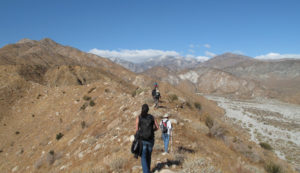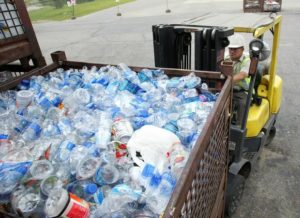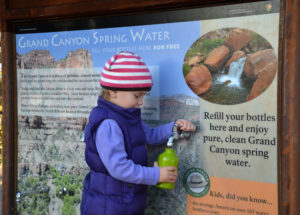National Monument/Parks – Some Good/Bad News

Some Good News

Sand to Snow National Monument recently deemed “safe”. Interior Secretary Ryan Zinke has just recommended no changes be made to the monument’s protected status.
Whew! One down. 20 national monuments to go, including Giant Sequoia and Vermillion Cliffs. (Was there public comment as was just added by the Administration to the 1906 Antiquities Act order?)
Sand to Snow was declared a national monument about 18 months ago by former President Barrack Obama.
“The 154,000-acre monument extends from Bureau of Land Management lands on the Sonoran desert floor up to over 10,000 feet in the San Gorgonio Wilderness on the San Bernardino National Forest.” (source NPS)
The San Gorgonio Wilderness is visited by some 50k hikers a year, making it the #1 visited wilderness area in Southern CA. Consider that 24m people live within a 2-hour drive of this beautiful recreational area.
These lands protect sacred heritage and endangered species. At the base of San Gorgonio Mountain lived The Serrano and Cahuilla Indian people. The Serrano were discovered living in this area by a Spanish explorer in the 16th century. They lived in dome-shaped roughly 12′ x 14′ shelters framed by willow poles and long sticks and covered with brush and yucca fiber. The shelter floors were typically dug about 2′ below the ground to help mitigate extreme temperatures.
The San Gorgonio and other mountains offered medicinal plants, basket-making material and deer and other animals for hunting and other food sources for California Natives, as they are called. The San Gorgonio Pass served as a major trade route that led from Arizona to the CA coast.
This preserve includes 30 miles of the more than 2,600-mi. Pacific Crest National Scenic Trail. Featured in hiking circles, the “Nine Peaks Challenge” is known as a grueling all-day 27-mile hike that rises over 8,300 feet in elevation across 9 peaks. Cross country skiing is one of the major winter activities in the San Gorgonio Mountains.
The management of this monument is shared by the U.S. Forest Service and the Bureau of Land Management.
Some Bad News

The 2011 NPS voluntary ban on sales of plastic water bottles in some of its parks has been lifted.
23 out of America’s 417 national parks, including the Grand Canyon and Mount Rushmore, had opted to restrict bottled water sales.
Litter bugs–ignorant or uncaring of the hiker’s montra “leave no trace”–will be in greater evidence again in the Grand Canyon and Zion National Parks, among ’em.
Of course the International Bottled Water Association lobbied the Trump Administration, claiming harm and foul that bottled sweetened drinks were allowed while bottled plain water was not.
“The decision came three weeks after the Senate confirmation of Interior Deputy Secretary David Bernhardt, a former lobbyist [whose law firm] represented Deer Park brand owner Nestlé,” as reported by The Washington Post (8/18/17).
Zion National Park in Utah had begun to sell reusable water bottles. Its water filling stations (which I appreciated and repeatedly used in both Yosemite and Sequoia National Parks earlier this summer) “serve as exhibits, giving visitors information about the impact of disposable bottles, as well as the safety and purity of Zion’s water and the importance of staying hydrated in the desert.” 5k pounds of plastic were estimated to be diverted from the waste stream in that park in 2015.
Following the ban, NPS announced it will offer both bottled plain water and water stations throughout its system.
I’ll follow the young fella in line here, thank you very much…
